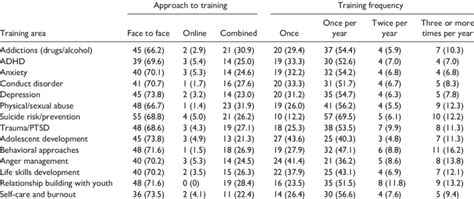For men: Optimize training frequency for peak strength & muscle gains?

The Underrated Pillar: Why Training Frequency Matters for Men
For men dedicated to building a formidable physique and unlocking peak strength, the conversation often revolves around lifting heavy weights, perfect form, and consuming enough protein. While these elements are undeniably crucial, one vital component frequently gets overlooked: training frequency. How often you stimulate a muscle group each week plays a profound role in dictating your rate of muscle growth (hypertrophy) and strength gains. It’s not just about how hard you train, but also how smart and how often.

Defining Training Frequency and Its Impact on Gains
Training frequency refers to the number of times a particular muscle group or movement pattern is trained within a given week. Historically, the “bro split” (training each muscle group once a week) dominated gym culture. However, modern sports science, backed by extensive research, increasingly points towards higher frequencies being more effective for most individuals, especially natural lifters.
The core principle is simple: each training session provides a stimulus that initiates muscle protein synthesis (MPS) – the process by which your body repairs and builds new muscle tissue. This MPS response is elevated for roughly 24-48 hours post-workout. If you only train a muscle group once a week, you’re leaving several days where your MPS isn’t optimally stimulated, potentially slowing down your progress.
The Science of Repeated Stimulus and Recovery
Optimal muscle growth isn’t just about maximizing the initial MPS spike; it’s about maintaining an elevated state of anabolism over time. By training a muscle group more frequently (e.g., 2-3 times per week), you create more opportunities to spike MPS, leading to a more consistent and prolonged period of muscle building. This repeated stimulus, when coupled with adequate recovery, becomes a powerful engine for hypertrophy and strength adaptation.
However, there’s a delicate balance. Too much frequency without sufficient recovery can lead to overtraining, diminished performance, and increased injury risk. The goal is to provide enough stimulus to trigger adaptation without exceeding your body’s capacity to recover.

Key Factors Influencing Your Ideal Frequency
What works for one man might not work for another. Several individual factors dictate the optimal training frequency:
- Training Volume & Intensity: Higher volume or intensity per session might necessitate lower frequency per muscle group to allow for adequate recovery. Conversely, lower volume/intensity sessions can often be performed more frequently.
- Training Experience: Beginners often respond well to higher frequencies with lower volumes per session. Advanced lifters might require more specific programming to continue progressing, balancing higher intensity with sufficient recovery.
- Recovery Capacity: Factors like sleep quality, nutrition, stress levels, and age significantly impact your ability to recover from training. Men with better recovery capacity can often handle higher frequencies.
- Lifestyle: Work, family, and other commitments dictate how much time you can realistically dedicate to the gym.
Common Training Splits and Their Frequencies
Let’s explore popular training splits and their implications for frequency:
Full Body Training (2-3x/week)
This approach trains all major muscle groups in each session. It’s excellent for beginners and those looking for efficient training, allowing each muscle group to be hit 2-3 times per week. Example: Monday, Wednesday, Friday full body workouts.
Upper/Lower Split (4x/week)
Splits the body into upper and lower body workouts, typically done twice a week each. This allows for higher volume per muscle group while still hitting each group twice weekly. Example: Mon (Upper), Tue (Lower), Thu (Upper), Fri (Lower).
Push/Pull/Legs (PPL) (3-6x/week)
Divides workouts by movement patterns: pushing muscles (chest, shoulders, triceps), pulling muscles (back, biceps), and legs. Can be run 3 times a week (one rotation) or 6 times a week (two rotations), hitting each group 1-2 times per week depending on the schedule. Running it twice allows for higher frequency (e.g., Mon P, Tue P, Wed L, Thu P, Fri P, Sat L).
The “Bro Split” (1x/week per muscle group)
While still popular, training a muscle group only once a week (e.g., Chest Day, Back Day, Leg Day) is generally suboptimal for natural lifters seeking maximum hypertrophy and strength, as it leaves too many days between stimulus for optimal MPS response.

Finding Your Optimal Frequency: Listen to Your Body
The “best” frequency isn’t fixed; it’s dynamic. Start with a moderate frequency (e.g., training each major muscle group 2 times per week) and adjust based on your recovery and progress. Look for signs of under-recovery: persistent soreness, fatigue, decreased performance, or lack of motivation. Conversely, if you’re recovering quickly and feel you could do more, consider slightly increasing frequency or volume.
Prioritize progressive overload – gradually increasing the weight, reps, or sets over time – regardless of your frequency. Frequency is a tool to facilitate this, not a replacement for it.

The Critical Role of Recovery
No amount of optimized training frequency will yield results without adequate recovery. For men pursuing peak strength and muscle gains, recovery isn’t just passive rest; it’s an active component of your training strategy:
- Sleep: Aim for 7-9 hours of quality sleep per night. This is when your body repairs and rebuilds.
- Nutrition: Consume sufficient protein (around 1.6-2.2g per kg body weight), adequate carbohydrates for energy, and healthy fats.
- Stress Management: Chronic stress elevates cortisol, which can hinder recovery and muscle growth.
- Hydration: Stay well-hydrated throughout the day.

Conclusion: Train Smart, Not Just Hard
For men aiming to optimize strength and muscle gains, understanding and strategically implementing training frequency is a game-changer. Moving beyond the outdated once-a-week per muscle group mindset and embracing higher frequencies (2-3 times per week per muscle group) for most natural lifters, balanced with appropriate volume and intensity, will likely accelerate your progress. Experiment, listen to your body, prioritize recovery, and remember that consistent, smart effort over time is the ultimate key to unlocking your full potential.








